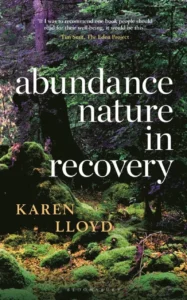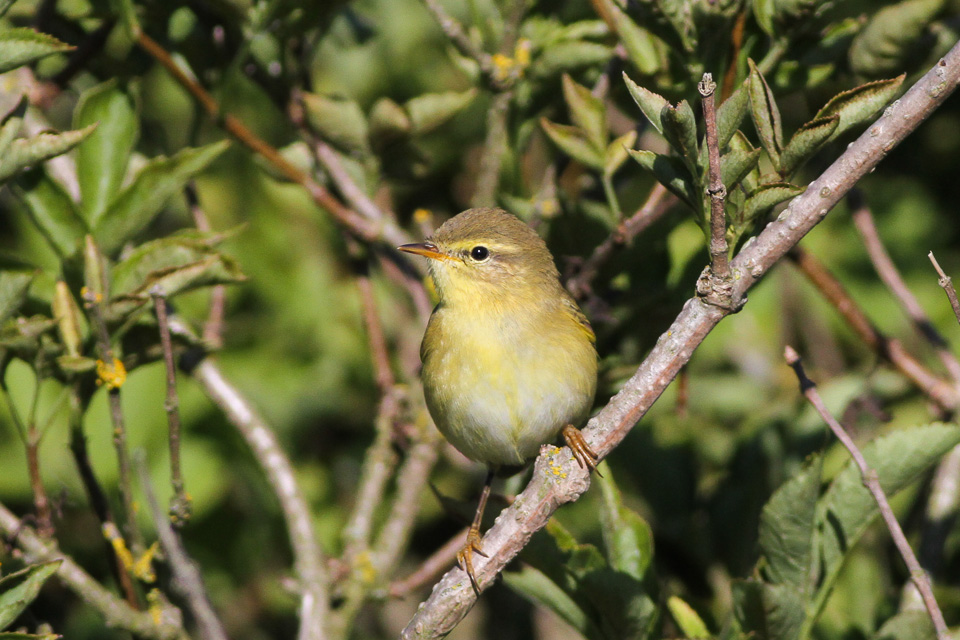 Abundance: Nature in Recovery is a collection of essays by award-winning author, Karen Lloyd. Examining abundance and losses in the natural world, Lloyd laments the lack of sight humanity has for the holes we have created. Looking first at artists such as Mary Newcomb, Carry Akroyd, and Daniel Beltrá, the book begins with the struggles of those trying to draw attention to the damaging impacts of human encroachment on the natural world. While many are beginning to understand the harm we are causing, the momentum of our modern society hasn’t allowed us to stop. By recounting a moment when a willow warbler flies into her house, Lloyd compares the fight of individual people against the systems we operate under with the panicked movements of the bird battering against the glass. We, like the bird, have no perception of how to remove ourselves from ‘the world of window frames and glass’ that we inhabit.
Abundance: Nature in Recovery is a collection of essays by award-winning author, Karen Lloyd. Examining abundance and losses in the natural world, Lloyd laments the lack of sight humanity has for the holes we have created. Looking first at artists such as Mary Newcomb, Carry Akroyd, and Daniel Beltrá, the book begins with the struggles of those trying to draw attention to the damaging impacts of human encroachment on the natural world. While many are beginning to understand the harm we are causing, the momentum of our modern society hasn’t allowed us to stop. By recounting a moment when a willow warbler flies into her house, Lloyd compares the fight of individual people against the systems we operate under with the panicked movements of the bird battering against the glass. We, like the bird, have no perception of how to remove ourselves from ‘the world of window frames and glass’ that we inhabit.

Abundance aims to give a voice to the species and habitats that are often disregarded in the political sphere. Travelling to places such as the Veluwe Forest in Switzerland, the Strathspey woodland in Scotland and the Hungarian Steppe, Lloyd tells the stories of people on the front line of conservation fighting to halt biodiversity loss. The volume of negative environmental news can often be overwhelming, and the author shares her own experience of this feeling in the opening essay. This book is a welcome break, reminding us that conservation success is possible and is taking place right now across Europe.

Through the exploration of local attitudes to conservation efforts, Lloyd touches on current themes such as rewilding and the return of wolves to the UK. Shifting baselines, where the current generation believes what they are seeing in nature around them is the norm and are unaware of the decline over previous generations, are impacting people’s perspective on the return of previously extinct species. Despite some extinctions being relatively recent, such as the beaver, the general public is unused to living with them. Therefore, they fear the impact these species may have on their daily lives. Worries of damage to livelihood and homes have been exacerbated by misconceptions and scapegoating. Lloyd recounts the concerns people have for the threatened wild salmon should beavers be allowed to remain, despite beavers being obligate herbivores, as well as the attempt to blame beavers for a flash flooding event in Alyth, Scotland. But if we are to allow the natural world to recover from the damage we have inflicted upon it, Lloyd believes that nature needs to be placed centre-stage in everything we do.

Abundance is an engaging and accessible book, presenting personal accounts of seeing firsthand the impacts of anthropomorphic destruction, riveting natural history stories and shocking data. From the conflict between the need for clean energy sources and the impacts of wind farms on birds to the impact of flood protection on beavers and kingfishers, Lloyd discusses our struggle to find effective solutions to tackle our biodiversity crisis. The engaging and entertaining nature of this book only increases as you read. Comparable to a travel book, each essay is a new adventure in wildlife-rich places. From eighty fragments on the pelican to tales from viewing platforms in the Lake District and the adventure of the 2020 lockdowns, the variety will hold your attention until the very end.
 Abundance: Nature in Recovery
Abundance: Nature in Recovery
By: Karen Lloyd
Hardback | September 2021
All prices correct at the time of this article’s publication.

